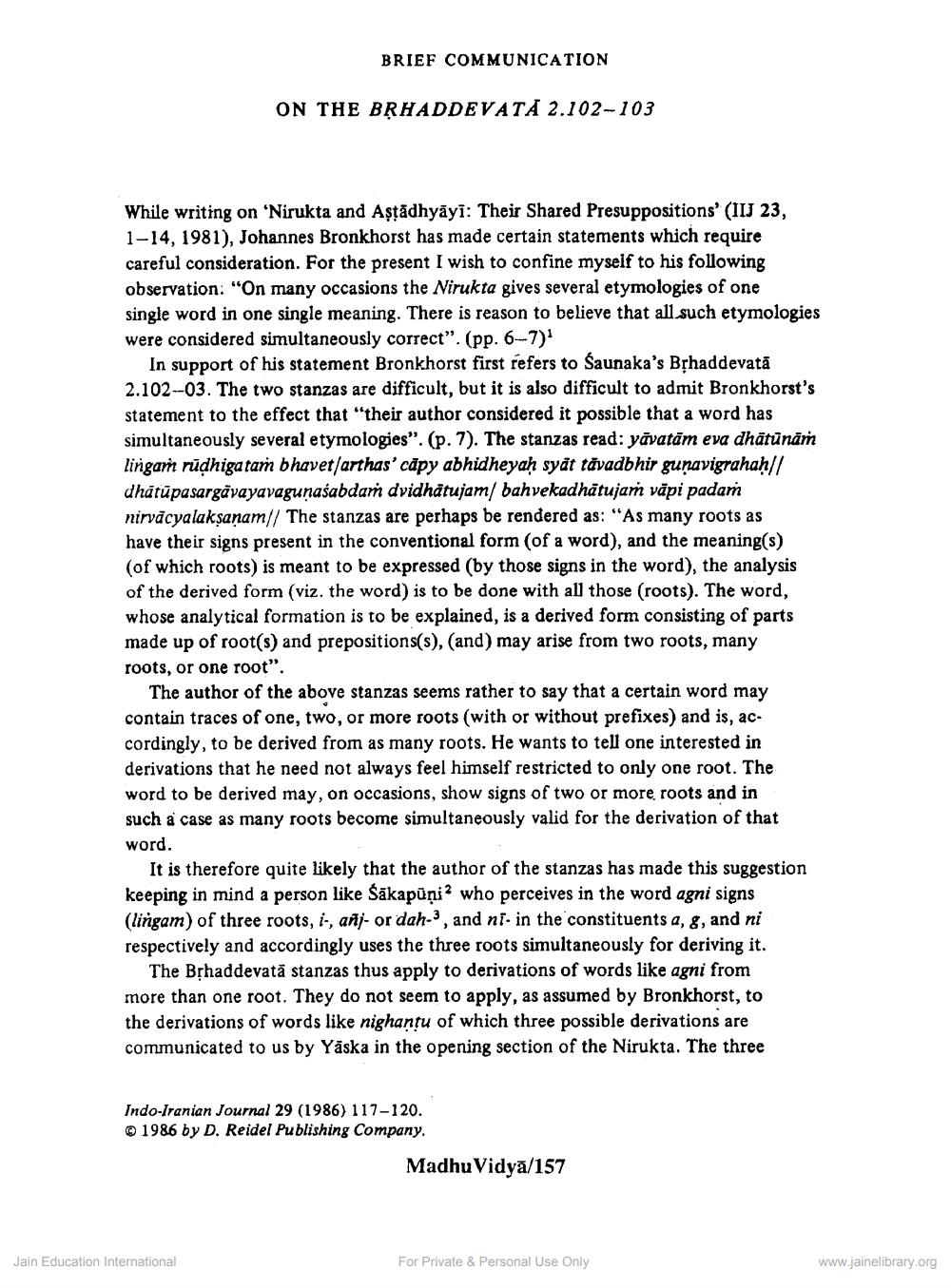________________
BRIEF COMMUNICATION
ON THE BRHADDEVATA 2.102-103
While writing on 'Nirukta and Aștādhyāyi: Their Shared Presuppositions' (IIJ 23, 1-14, 1981), Johannes Bronkhorst has made certain statements which require careful consideration. For the present I wish to confine myself to his following observation. "On many occasions the Nirukta gives several etymologies of one single word in one single meaning. There is reason to believe that all such etymologies were considered simultaneously correct”. (pp. 6-7)
In support of his statement Bronkhorst first refers to Saunaka's BỊhaddevatā 2.102--03. The two stanzas are difficult, but it is also difficult to admit Bronkhorst's statement to the effect that "their author considered it possible that a word has simultaneously several etymologies". (p. 7). The stanzas read: yāvatām eva dhätūnām lingam rūdhiga tam bhavet/arthas' căpy abhidheyah syat tävadbhir gunavigrahah// dhatupasargāvayavagunaśabdaṁ dvidhatujam/ bahvekadhātujam vāpi padam nirvacyalaksanam// The stanzas are perhaps be rendered as: "As many roots as have their signs present in the conventional form (of a word), and the meaning(s) (of which roots) is meant to be expressed (by those signs in the word), the analysis of the derived form (viz. the word) is to be done with all those (roots). The word, whose analytical formation is to be explained, is a derived form consisting of parts made up of root(s) and prepositions(s), (and) may arise from two roots, many roots, or one root".
The author of the above stanzas seems rather to say that a certain word may contain traces of one, two, or more roots (with or without prefixes) and is, accordingly, to be derived from as many roots. He wants to tell one interested in derivations that he need not always feel himself restricted to only one root. The word to be derived may, on occasions, show signs of two or more roots and in such a case as many roots become simultaneously valid for the derivation of that word.
It is therefore quite likely that the author of the stanzas has made this suggestion keeping in mind a person like Śākapūņi? who perceives in the word agni signs (lingam) of three roots, i-, anj- or dah-, and ni. in the constituents a, &, and ni respectively and accordingly uses the three roots simultaneously for deriving it.
The BỊhaddevată stanzas thus apply to derivations of words like agni from more than one root. They do not seem to apply, as assumed by Bronkhorst, to the derivations of words like nighantu of which three possible derivations are communicated to us by Yāska in the opening section of the Nirukta. The three
Indo-Iranian Journal 29 (1986) 117-120. © 1986 by D. Reidel Publishing Company.
Madhu Vidyā/157
Jain Education International
For Private & Personal Use Only
www.jainelibrary.org




